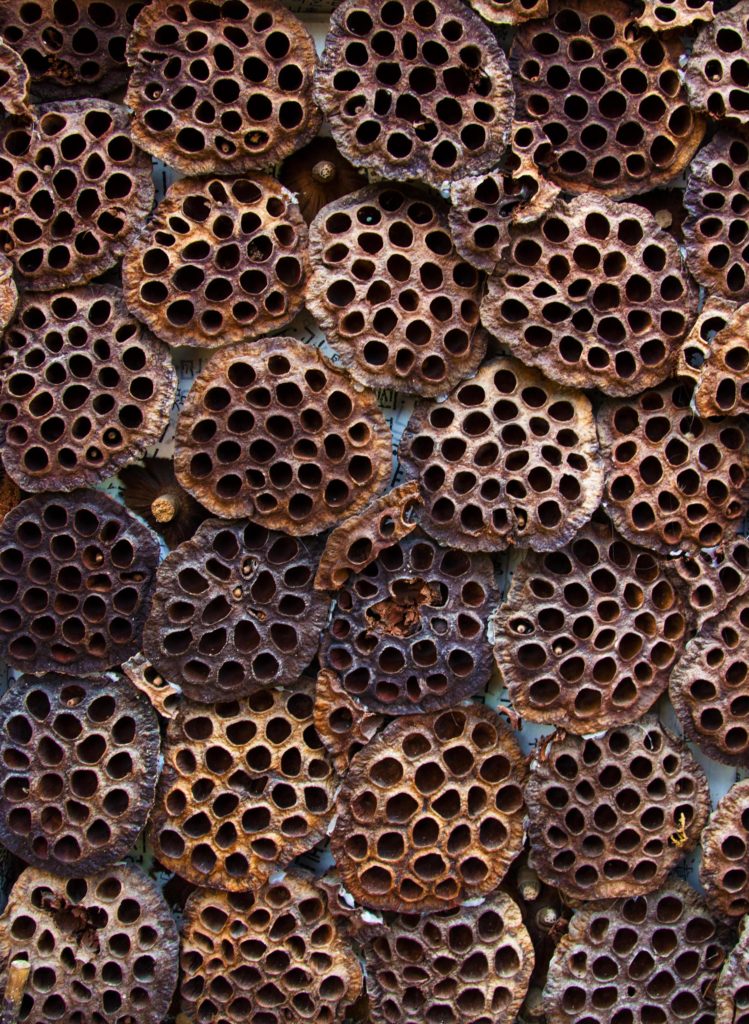Tripophobia is an extreme fear or revulsion by any pattern of geometric figures very close to each other. These figures can be holes and small rectangles or convex circles. In fact, the word tripophobia literally means “fear of holes. “
This irrational fear is very common in humans, although today little is known about it. Millions of people reported feeling symptoms of disgust and anxiety when they saw patterns of small holes clustered together.
- Phobias are defined as an intense and irrational fear of a person.
- Object or situation that presents little or no danger.
- The word comes from the Greek word phobos.
- Which means “panic”.
In Greek mythology, Phobos was the son of Ares, god of war, and Aphrodite, goddess of love, personified fear. Alexander the Great prayed to Phobos before all battles to protect himself from fear.
When we talk about tripophobia, we mean a specific phobia characterized by fear or anxiety to clearly defined objects or situations, which can be calledphobic stimuli, in this case they would be geometric shapes very close to each other.
Specific phobias, such as tripophobia, have the following characteristics:
It is common for people to have several specific phobias. Approximately 75% of people with a specific phobia fear more than one situation or object.
People with tripophobia often experience symptoms of anxiety when looking at corals, honeycombs, soap bubbles, polka dot clothing, aerated chocolate or a handful of stacked logs.
Being repelled by these geometric figures is not a disease, it presupposes a normal and frequent fear in humans, since it prevents certain dangers, such as contracting diseases or suffering damage.
However, if this irrational fear interferes with our daily lives or well-being, preventing us from living a normal life, we would be talking about a disorder that needs to be intervened.
The causes of tripophobia have recently been studied by the University of Essex and published in the journal Psychological Science. Visual patterns that trigger symptoms of anxiety in people with tripophobia are similar to those found in several poisonous animals.
Therefore, tripophobia might have an evolutionary explanation. Would those who feel repelled by observing these geometric patterns move away from dangerous animals, would that help them survive, as they would not be poisoned or attacked?For this kind of animals.
This explanation is different from the causes of other phobias, since most of our irrational fears are learned, we learn to be afraid of certain stimuli of personal or other experiences, observed or told, so tripophobia does not come from trauma. Does it have a cultural origin, such as fear of number 13, or triscaidephobia?
The aversion, fear or disgust over existing holes in organic matter can be easily explained, as these are images that are often associated with the disease.
The symptoms of tripophobia are the same as those of any other specific phobia, so the symptoms would be:
If you feel identified with the symptoms described, you may have developed tripophobia. However, it should be remembered that the diagnosis can only be made by a specialist. If this is the case, it is better to seek the help of a psychologist.
Treatment of tripophobia is a live exposure to the dreaded stimulus, in this case to certain geometric figures or images, in some cases it is also useful to complement live exposure with relaxation techniques.
Relaxation can be used in addition to exposure, as relaxation alone has little therapeutic effect on fluoric disorders. To be exposed to these geometric figures or hole patterns is to be present in the situation one fears, for example, in front of a certain plant or honeycombs.
One of the common problems in the treatment of phobias is the onset of panic attacks, in this sense it seems that the practice of exposure is generally incompatible with its occurrence, however, the probability of occurrence increases if the patient makes catastrophic interpretations of it. In these cases, you should try to counteract this type of thinking by forming appropriate thoughts.
If the panic attack appears, try to stay in the situation until it disappears. You should get as far away from the situation as possible and return as soon as possible.
As we have seen, tripophobia is an irrational fear of different geometric figures or groups of holes, like any other phobia, is a disorder that has a solution, as long as it is treated by a mental health specialist.

